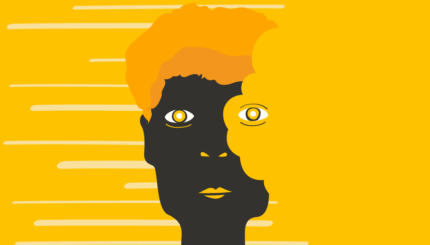I’m not a great believer in fate, but I certainly have encountered more than a few instances of bashert—that lovely Hebrew word signifying things that are meant to be—during the research and writing of my book and the production of the documentary film that preceded it.
For example, I’ll never forget one of my visits to the Jewish Museum in Vienna, which resulted in a very powerful moment of bashert. The museum has two locations—the main building and a sort of annex that is located on the Judenplatz—Jewish Plaza—not far from the Israelitsche Kultusgemeinde, the official organization of Vienna’s Jewish community. I was there on a weekday afternoon, and the museum was nearly empty. As I wandered through the building, however, I recognized an American whom I had met a few days earlier at the Vienna airport after we had both flown in on the same short flight from Berlin. We renewed our acquaintance at the museum, and this fellow, Marty Keller, introduced me to his cousin, Steve. We began talking, and they mentioned that both of their fathers had left Vienna as children not long after Nazi Germany had taken over Austria. Marty had come to Vienna for a conference, and Steve had come along after the two cousins thought they’d try to learn a little more about their fathers’ childhoods.
At that point, of course, I mentioned that I was in Vienna for some research about the rescue of fifty Jewish children in 1939. They both looked at me with identical shocked expressions on their faces. While they didn’t know much about the precise circumstances and details of their fathers’ escapes from Vienna, Steve said the episode I was describing sounded familiar. That’s when I reached into my coat pocket and unfolded a copy of a photograph of the fifty children on board the ship that brought them to America. I had gotten into the habit, for no readily apparent reason, of carrying around the photo wherever I went during my research. I had also been filling in the names of each of the children whenever I was able to clearly identify them. At this point in the project, there were still several children whom I could not match with a name.
Steve immediately pointed to one of the older and taller boys standing in the back row in the photograph. “That’s my father, Robert!” he told me. We talked for a few more minutes at the museum and made plans to get together the next day for coffee. I filled them in on more details about the children’s rescue, and Steve later sent me more information about his father, who had passed away many years ago. I was able to fill in another name on that group photo.
And then there’s the painting of Rosa Jacobs, and how it wound up hanging in our living room in San Francisco.
As part of my research into the backgrounds of Gil and Eleanor Kraus, I was always interested in finding out as much as I could about Gil’s work as a lawyer in Philadelphia in the 1920s and 1930s. At the time of the rescue mission in 1939, Gil had a law partner named Edward Weyl, and I learned at some point that Eleanor had a niece who had married into the Weyl family. After more digging, I finally was able to get in touch with one of Edward Weyl’s sons. Unfortunately, however, he didn’t have much information to offer about his father’s legal partnership with Gil, which is what I was mostly interested in.
“But I do have something here that might be of some interest,” Don Weyl told me. “I think I have a painting that belongs to your wife.” The painting, by the fairly renowned America painter Gladys Rockmore Davis, was an elegant portrait of Eleanor Kraus’ mother, presumably done sometime in the 1930s. On the back of the painting, along one of the edges of the wooden frame, Eleanor had written in ink that, upon her death, the painting was to be given to her niece Jane, who was Don Weyl’s mother. And when Jane died, Eleanor had also written, the painting was to be passed along to Eleanor’s granddaughter, Liz Perle. Don, however, knew nothing about Liz, and certainly had no way of finding her after his mother passed away. At least not until I called him one day, out of the blue, asking about his father’s long-ago connections to Gil Kraus.
Rosa Jacobs now looks down at us, in her original wooden frame, with my wife’s name on the back scrawled out in ink decades ago by her grandmother. Liz can now gaze up at her great-grandmother. And while I still don’t necessarily believe in fate, I certainly have come to recognize the power of bashert.
The Visiting Scribes series was produced by the Jewish Book Council‘s blog, The Prosen People.
The Jewish world is full of debates. Get the latest in MyJewishLearning’s weekly blogs newsletter.

